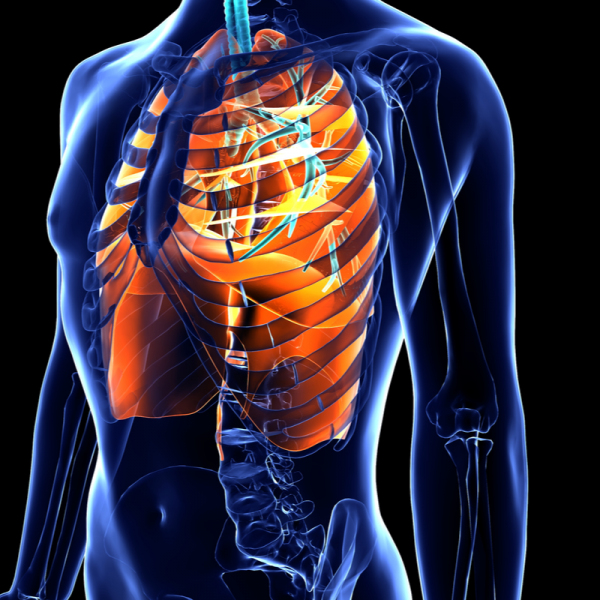
What is a thoracic cyst?
A thoracic cyst is a fluid-filled cavity in the tissue of the chest (thorax). The thorax includes the chest cavity and the chest wall. In addition to muscles, it also includes vital organs such as the heart, the lungs and the thyroid gland. If the cyst is in the lung and is therefore a lung cyst, it is usually filled with air instead of fluid. Often, a thoracic cyst is congenital and if it does not cause any symptoms, it tends to be discovered by chance.
What are the symptoms of a thoracic cyst?
A thoracic cyst often makes itself felt through rather unspecific symptoms such as a strong urge to cough, shortness of breath, hoarseness, chest pain, fever or an unwanted loss of weight. Since these symptoms can also indicate other diseases, they should be clarified by a doctor.
How is a thoracic cyst diagnosed?
After taking the patient's medical history and complaints, the attending physician will perform a physical examination. If the suspicion of a thoracic cyst is strengthened, the thorax can be examined more closely using the usual imaging procedures. This includes, for example, an X-ray examination or a computer tomography (CT) of the thorax, which not only shows the exact location but also the size of the cyst. In many cases, however, a thoracic cyst is diagnosed by chance during another necessary examination, provided it has not previously caused any symptoms.
How is a thoracic cyst treated?
A thoracic cyst is usually removed surgically. If the cyst has affected the entire upper lobe of the lung, a lobectomy can also be performed. This is the surgical removal of the affected upper lobe of the lung. Medicinal pain therapy is then prescribed.
If, on the other hand, the cyst is smaller and can be easily reached locally, a minimally invasive procedure is performed. For example, the so-called thoracoscopic surgical technique can be used, in which three or four small incisions of about 3 to 5 millimetres in length are made across the right or left thorax. Through these incisions, a thin tube called a trocar can be inserted into the chest cavity. The trocar is also used to blow air into the chest cavity and to insert a camera for a thoracoscopy.
Even after successful treatment, the patient should attend regular check-ups in order to detect and treat a possible recurrence of the thoracic cyst at an early stage.
| Pathogen | Source | Members - Area |
|---|---|---|
| Thoracic cyst | EDTFL | As a NLS member you have direct access to these frequency lists |
